Spiš is the name of a region located in the north-east of Slovakia which gave its name to the famous castle situated near Spišsky. Indeed, the castle has been used as the setting of numerous films such as Dragonheart (1996), Kull the Conqueror (1997), The Lion in Winter (2003) or The Last Legion (2009).
|
|
|
|
The castle of Spiš was built in the 12th century and it's located in the centre of Spiš region and on the travertine hill near Spišské Podhradie. It was included in the UNESCO list of world heritage sites in 1993. Spiš castle is one of the largest castle complexes in Europe. |
|
|
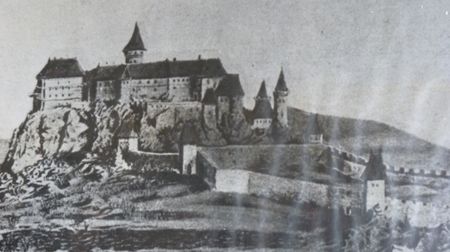 |
Built on a 634 meter-high limestone cliff on the crossroads of medieval merchant routes, Spiš castle was first a walled settlement until the 2nd century AD. Indeed the remains of buildings dating from that period were discovered during an archaeological survey.
Yet, the first written mention of the castle is to be found in the Letter of documentation of King Andrew II of Hungary and dates back to 1209. The medieval castle, property of the kings of Hungary until the 15th century, was built gradually, first around a huge round wooden tower known as the keep. Unfortunately this keep didn't last long as it was destroyed at the end of the 12th century due to tectonic disturbances.
Around the beginning of the 13th century, the castle hill was fortified with walls and the so-called Romanesque Palace was built with a new round tower next to it. It became an impregnable fortress. This is probably the reason why in 1241 Spiš castle was besieged by Tartars but held.
Here is the legend that resulted from this siege :
|
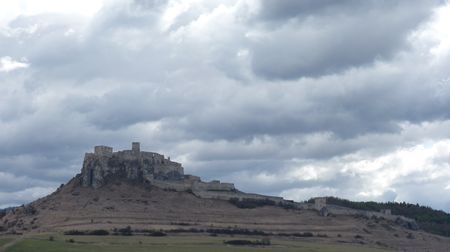 |
THE LEGEND OF THE TARTAR PRINCESS
|
It is said that in the 13th century, Tatars came to the Spiš region and decided to besiege Spiš castle. They hid in the woods while trying to find a way to conquer the fortress. They realised that the castle had only one weak point : water. Indeed, the castle was built on a rock which implies that no wells could be dug. The only water the inhabitants of the castle could count on was rain water.
In the mean time, the king of Spiš castle decided he would not wait for the water supplies to be empty before organising the defence of the castle. So he sent some of his soldiers to to neighbouring woods. Their task was to kidnap the Tartar princess, a task they completed successfully.
The king of Spiš castle and the Tartar king came to an agreement : the Tartars agreed on leaving the region in exchange for Princess Shaat's return. Unfortunately, this was without taking into account the fact that Shaat and the son of the King of Spiš castle had fallen in love and decided to get married!
On the day of their espousal, one of the tartar soldiers infiltrated the castle and killed the Princess with an arrow in the heart. On the arrow there was a note from Princess Shaat's father which read : "This is your wedding present".
|
Spišské Podhradie viewed from the castle |
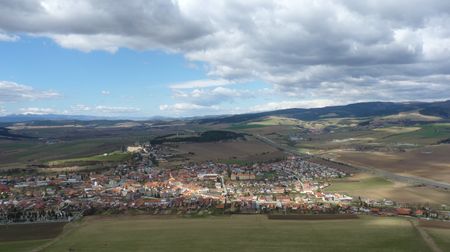 |
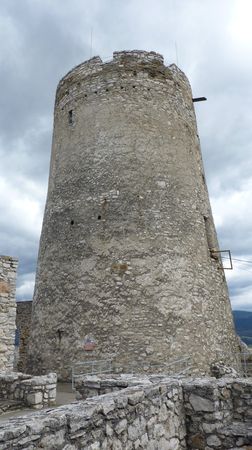
The dungeon
|
After the tartars withdrew, the king decided the castle had to be built of stone, and in 1249, when the Provost of Spiš was given the ground and he erected a tower and a palace in the castle. Thus the first ward was created and the Romanesque chapel was built.
The castle was badly damaged in the 1280s durind the battles for the crown of Hungary between Charles Robert and Wenceslas III.
In the mid-14th century a second ward was added as well as a barbican and a dry moat.
In 1437, after the death of King Sigismund, new battles for the crown began. His daughter, Queen Elisabeth had to hire the army of Jan Jiskra of Brandys in order to protect her interests. That's the time when the castle was completed to its present-day size.
In the second half of the 15th century, the castle was donated to Emerich and Stephen Zápoľský. They made transformation to the castle giving it a more Gothic style.
|
Then, from 1531 to 1635 Spiš castle became the property of the Thurzos, a rich aristocratic family who gavce the castle a Renaissance style. They also used the most recent military techniques to turn the castle into a modern stronghold. Fon instance, they added loopholes and had bastions built.
|
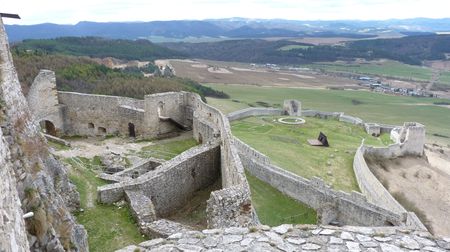
|
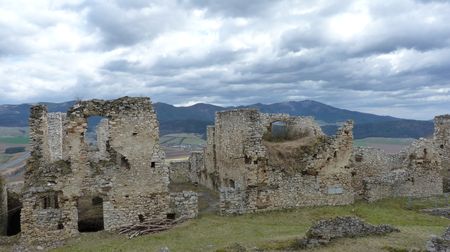
The Romanesque Palace : The men's apartment on the left and the women's on the right |
In 1638, the castle was finally bought by the Csáky family who gave it its present-day appearance. They built 3 palaces; one for women (above the kitchens as it was warmer) one for the men and one for the guests.
The castle witnessed its last military event in 1710 and was little by little deserted as it was too cold to be lived in according to the Csákys. Only a small garison stayed in the castle until 1780 when it burnt down.
|
Since 1945 it's been owned by the state of Slovakia. It is now a museum.
Inside the castle, they tried to reproduce the rooms in which the inhabitants lived in the old days. We can imagine how they cooked, ate, prayed and slept, for example. |
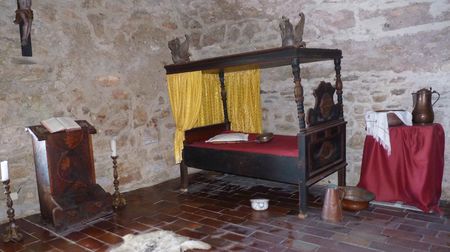
A bedroom
|
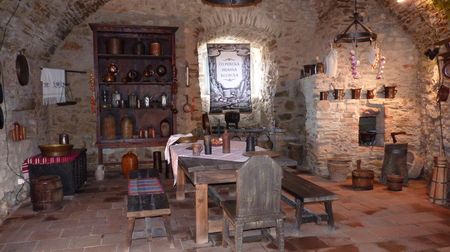
The kitchen |
The kitchen was a place filled with warmth, delicate aroma, spices and the finest ingredients. It was a place where skillful, ingenious cooks would do wonders to please their masters with a plethora of dainties and culinary specialties.
Feasts and particularly weddings were prepared in an extremely pompous and opulent way.
A great amount of food was served in precious dinnerware and the main decoration of the table was represented by dishes which were not supposed to be eaten. Wealthy families were served 5 separate dishes, but by the end of the 16th century, feasts lasted 3 to 4 hours and the cooks would prepare 30 to 100 dishes per meal! As, it was rude to refuse to eat a dish, the guests had to each single one of these 100 dishes! As we may well imagine, guests were often full... So they would use "napkins"... "Napkins" were in fact young boys who would stand behind the guests during the meal, holding a bowl or a basket for guests to use whenever they felt too full!
At the noblemen's table or in wealthy households, people had to behave according to a specific dining etiquette. Here are some of these rules: one's elbows on the tablewas very inappropriate, hands were to be placed in a relaxed way next to a plate. It was inadmissible to lean against the wall, to choose the best piece from a dish, to drop food on the table, to blow on a hot dish to cool it, to lick a spoon, to burp or to drink with one's mouth unwiped.
|
Yet, under the same roof, some less refined manners cohabited, as shown by the exhibition in the torture room, displaying some instruments invented to force people into confessing to any crime.
|

|
 |
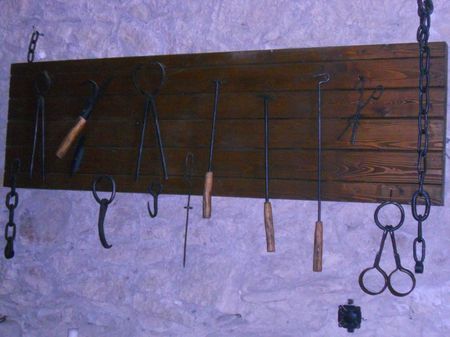
|
THE LEGEND OF HEDVIGA
|
The legend has it that the monarch of Spiš Castle, Philip, killed the son of a Polish monarch. The latter decided to take revenge by killing King Philip's daughter Barbora. One day, as Barbora and her sister Hedviga were alone in the castle, the Polish monarch came and tried to kill Barbora. Thinking that Barbora was dead, Hedviga jumped from the highest tower in the castle out of despair.
Unfortunately Hedviga had jumped uselessly, because the polish monarch hadn't killed Barbora. After her jump, her face appeared on the wall.
|
 |
LEVOČA
Not far from Spiš castle, on a hill to the south of the high Tatras (eastern Slovakia), 573 meters above sea level, the town of Levoča dominates its surroundings. The town has retained its medieval shape till the present time. The historic ground plan and most of the architecture goes back as far as medieval or early modern timeswhen this area was part of the Kingdom of Hungary. |
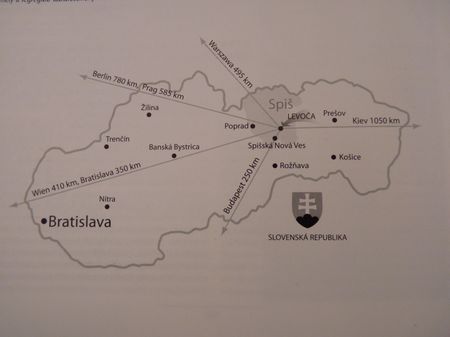 |
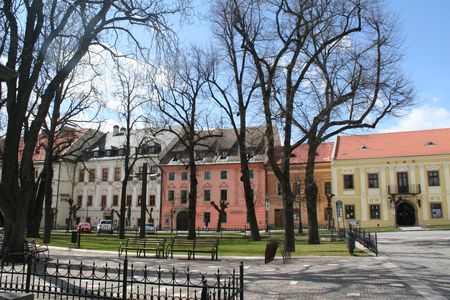
Northern part of the square and Provincial houses
|
The oldest written notice about Levoča dates back to 1249. Levoča was a well-known town with an international trade route passing by. Archaeological finds prove the surroundings of the town was settled as early as primeval times. At the beginning of the present town history we can find numerous settlements or villages which even had their own churches. |
One of those settlements was situated under the hill called "old Levoča", where a considerably large church of St Nicholas was unearthed. This chuch might have been first built at the turn of the 11th and 12th centuries. The church was later rebuilt and enlarged twice. Nevertheless, it was abandoned in the middle ages because the church was situated outside the fortification walls of the present town.
|
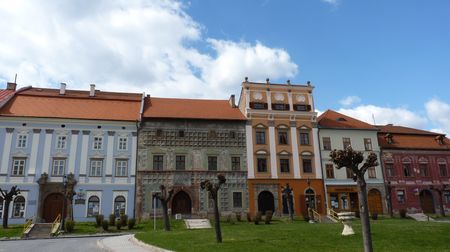
Western part of the square
|
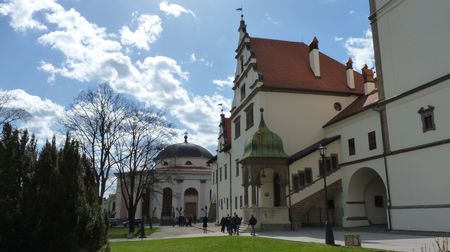
The Evangelical Church and the Town Hall |
One the hill which rises above the town is called burg (castle). A walled place of refuge used to be there during the tartar invasions. The present town must have been built , based on fixed town planning, after the tartars had left the country in 1241. The building of build such a big and rich town was made possible due to the fact that since the 12th century the territory of Spiš region had been settled by the German colonists who were privileged in the relation to the local people. They enjoyed personal and property liberties of exploiting fields, woods and mines, liberty of trade and craft. Levoča had its own administration. Those liberties enabled them and local people to set up free towns and small towns. |
In 1271 King Štefan V acknowledged the privileges of the Spiš Germans and Levoča became the capital of the whole province of the Spiš Saxons. Levoča must have been a built-up and partly fortified town then. Levoča flourished thanks to this privilege to which other economic liberties were gradually added. However, its development was highly promoted by the advantageous position of the town on a crossroad of international trade routes connecting the east with Northern and Central Europe, as well as the Balkans with Northern Europe and the Baltic Sea. In this connection, it was crucial that Levoča was granted the right to store in 1321. According to this right all the merchants passing by the town were obliged to enter the town, pay tolls stay for two weeks, unload their wares and offer them for sale to the merchants from Levoča. Only the wares not wanted by the local people could be taken and sold somewhere else. It was this privilege which made Levoča so important as a commercial centre - like Krakow or Wroclaw. Naturally immense capital was accumulated, which was essential for the development of architecture as well as culture and arts.
|
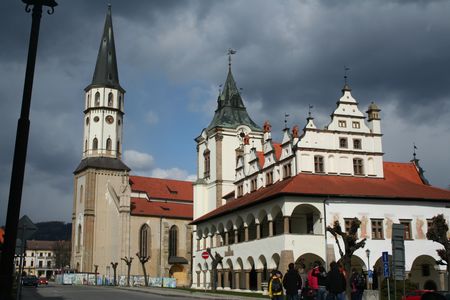
The Church of St. James and The Town Hall |
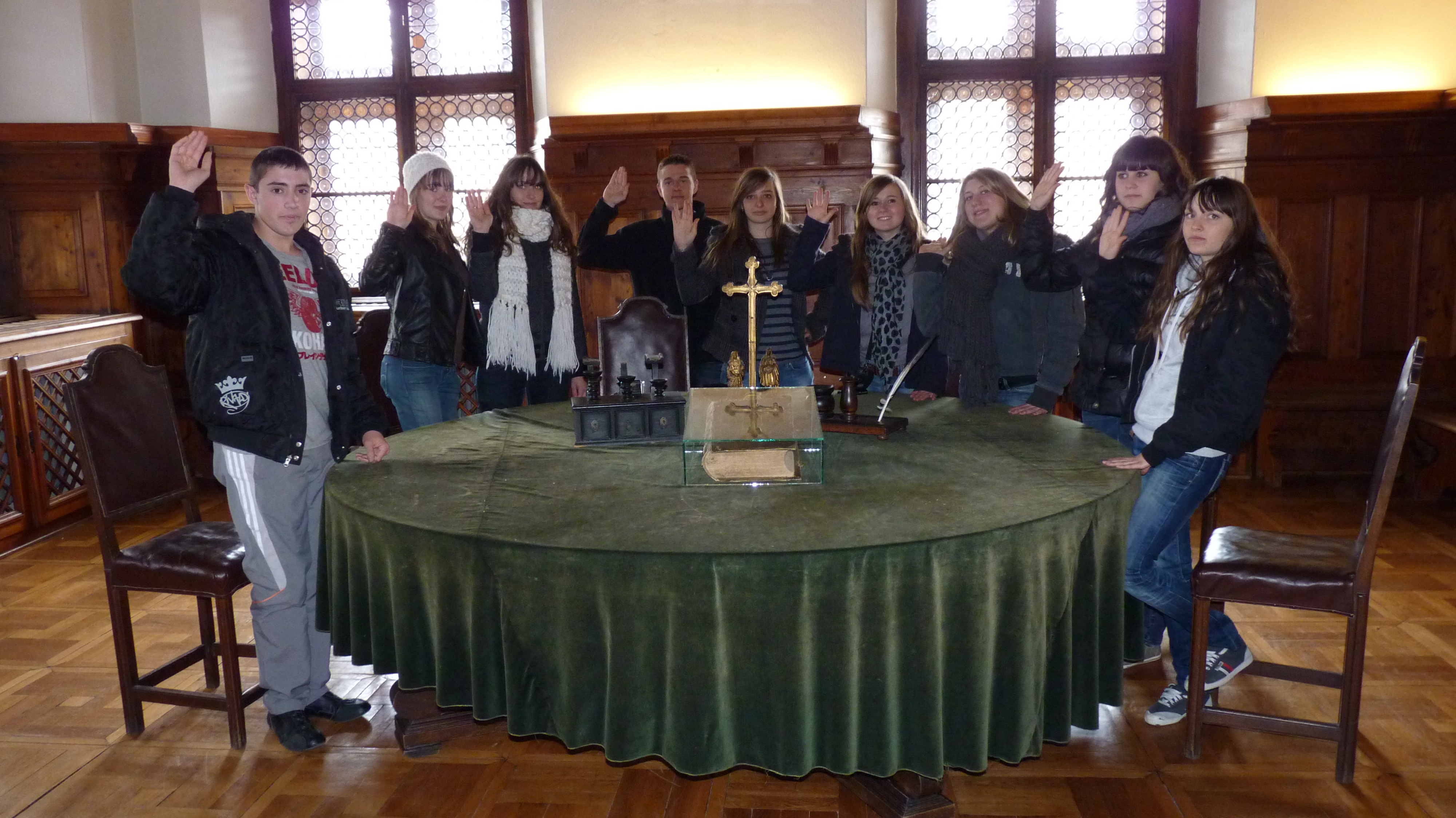
The table around which the king and his councillors worked together
|
The economic development of the medieval Levoča reached its peak in the 14th and 15th centuries. The town attracted not only merchants but also intellectualsfrom the whole of Central Europe. The growing importance of the town was reflected in the fact that in 1494 Levoča was chosen as a meeting and negociating place by a Hungarian king and a Polish king who spent a month in Levoča with their courts. |
The development advanced over the first quarter of the 16th century when Master Paul, a world-famous woodcarver, came to live in Levoča. Most documents about him vanished in the fire of 1550, so neither his surname nor dates or places of birth and death are known. It is assumed that he was born between 1470 and 1480 and he must have died between 1537 and 1542. He probably started carving in Krakow and arrived in Levoča around 1500. His works include an altar of St. George in Spišská Sobota (today part of Poprad) from 1516, and his most famous work, completed in 1517, an altar of the St. James chuch in Levoča. This late Gothic altar is the highest of Europe (18.62 metres high). It is carved in wood and decorated with gold.
|
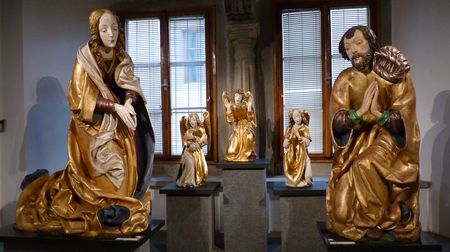
Madonna and St. Joseph, from the altar of the Nativity |
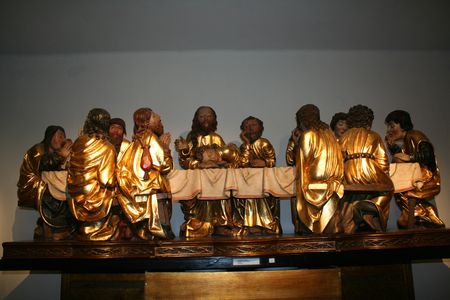
The Last Supper scene from Master Paul's altar in Levoča
|
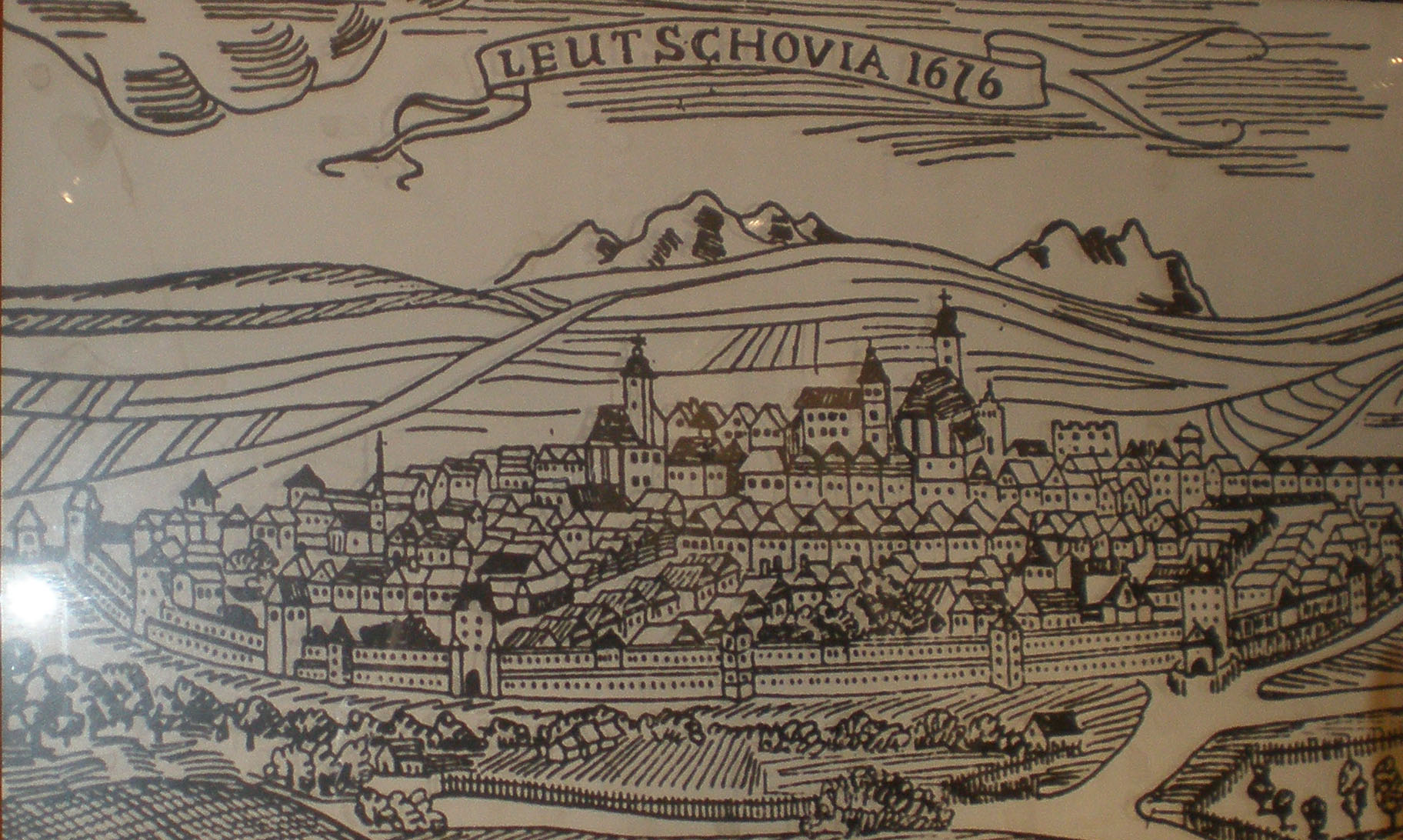 |
The development was hindered due to the defeat of Hungarian troops by the Turks at the battle of Mohács in 1526 and also because of the big fires of 1550 and 1559.
In the 16th century, reformation arrived in the town. The 17th century was interspersed with anti-Habsburg rebellions, which along with the Turkish invasions weakened the economic position of the town. Finally, Levoča became the seat of the former Spiš Province until 1923. |
THE LEGEND OF THE WHITE LADY OF LEVOČA |
The White lady of Levoča is unique because she really existed. Her name was Julia Korponayova, and she came from Ožďany, a village near Rimavská Sobota in the southeast of Slovakia. During a rebellion of the Hungarian estates against the Hapsburg monarchy at the end of the seventeenth century, she married Ján Korponay, one of the leaders of the rebellion.
However, in an attempt to regain some confiscated assets for her son, she agreed to act as a spy for the Hapsburg emperor, and was sent to Levoča, which at the time was besieged by the Hapsburg army. She became the lover of the rebel baron Štefan Andrássy, and after stealing his keys, let the besieging army into the city, which fell without a struggle.
According to the legend, she lost the emperor's favour in 1712 when she agreed to receive the letters from the rebel exiles in Poland, who were trying to foment a new rebellion. She was the only woman in Hungary charged with treason. After such an accusation, she was executed on September 25, 1714 in Györ.
The White Lady of Levoča is also the name of a book by the Hungarian romantic writer Móric Jókai, who was responsible for making a legend of the real Júlia Korponayová by dramatizing a painting that still hangs in the Levoča town hall. The painting, by Viliam Forberger (1848-1928), depicts a woman in a white dress with a red sash over her shoulders fitting a key into a lock.
According to Jókai, Korponayová was subjected to terrible tortures. Her hands were crushed, they put a wooden "crown" on her head that worked like a vise, and finally she was executed. |
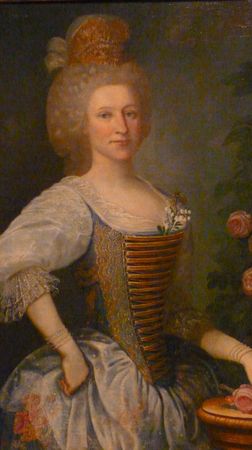 |